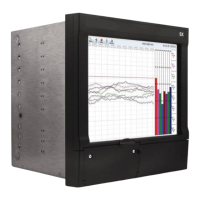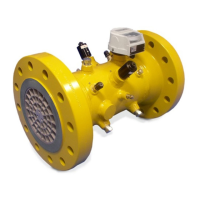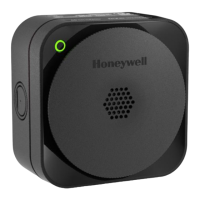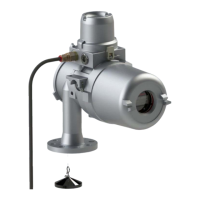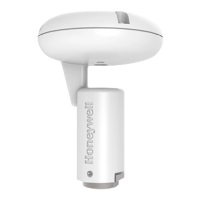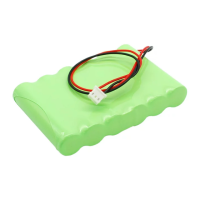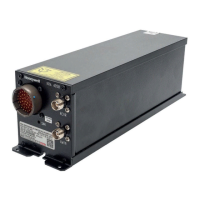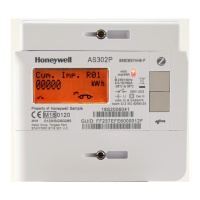Honeywell Sensing and Control 61
SC 2000, SC2001, SC3004
Rev. G, 008-0608-00
KNOWN POINT x/y Menu Items
This enters the engineering units for the known-load calibration
points. These points must match the actual loads that you will
apply to the instrument during calibration. The number of calibra-
tions points depends on the CALIBRATION TYPE.
When using the 2-Point Known Load Calibration type, the follow-
ing menu items are available:
• “KNOWN POINT 1/2”: point 1 of 2, usually 0% of the transduc-
er’s full-scale capacity.
• “KNOWN POINT 2/2”: point 2 of 2, usually 100% of the trans-
ducer’s full-scale capacity.
When using the 3-Point Known Load Calibration type, the follow-
ing menu items are available:
• “KNOWN POINT 1/3”: point 1 of 3, usually 0% of the transduc-
er’s full-scale capacity.
• “KNOWN POINT 2/3”: point 2 of 3, usually 50% of the transduc-
er’s full-scale capacity.
• “KNOWN POINT 3/3”: point 3 of 3, usually 100% of the trans-
ducer’s full-scale capacity.
When using the 5-Point Known Load Calibration type, the follow-
ing menu items are available:
• “KNOWN POINT 1/5”: point 1 of 5, usually 0% of the transduc-
er’s full-scale capacity.
• “KNOWN POINT 2/5”: point 2 of 5, usually 25% of the transduc-
er’s full-scale capacity.
• “KNOWN POINT 3/5”: point 3 of 5, usually 50% of the transduc-
er’s full-scale capacity.
• “KNOWN POINT 4/5”: point 4 of 5, usually 75% of the transduc-
er’s full-scale capacity.
• “KNOWN POINT 5/5”: point 5 of 5, usually 100% of the trans-
ducer’s full-scale capacity.
NOTICE
To insure both correct operation of the transducer and ap-
plication of the load, the instrument expects the voltage or
current applied at each known-load point to be increasing.
For example, the load applied at Known-Load Point 2/2 must
cause the transducer to produce a more positive voltage or
current than at Known-Load Point 1/2.
These menu items are only available with the Known-Load Cali-
bration types.
12.6.6 CALIBRATE Menu Item
This menu item performs a calibration according to what was en-
tered in the CALIBRATION TYPE and CALIBRATION DATA menu items.
NOTICE
Before performing a calibration,
• thetransducermustbeconnectedtotheinstrument,
• thechannel’sExcitationandSignalJumpersmustbeset,
• theCALIBRATION TYPE must be selected (see “CALIBRATION
TYPE Menu Item” on page 59), and
• theCALIBRATION DATA must be entered (see “CALIBRATION
DATA Sub-Menu” on page 60).
NOTICE
For maximum accuracy, allow at least twenty minutes of
warm-up with the excitation voltage applied to the transducer
before calibration.
If the CALIBRATION TYPE is Shunt Calibration...
• ThedisplaywillreadDOING SHUNT CAL, and prompt you to
APPLY 00000 UNIT (where 00000 and UNIT are previously
entered as ZERO SCALE VALUE and DISPLAY. UNITS. When you
have applied this load to the transducer, press [ENTER].
• ThedisplaywillthenreadWORKING and calibration will take
place. Upon completion, the display will indicate DONE and
the instrument will return to the RUN mode.
If the CALIBRATION TYPE is 2-Point Known Load Calibration...
• ThedisplaywillreadDOING 2POINT CAL, and prompt you to
APPLY 00000 UNIT (where 00000 and UNIT are previously
entered as KNOWN POINT 1/2 and DISPLAY. UNITS). When you
have applied this load to the transducer, press [ENTER].
• ThedisplaywillreadWORKING, then APPLY 01000 UNIT (where
01000 and UNIT are previously entered as KNOWN POINT 2/2
and DISPLAY. UNITS). When you have applied this load to the
transducer, press [ENTER].
• Uponcompletion,thedisplaywillindicateDONE and the
instrument will return to the RUN mode.
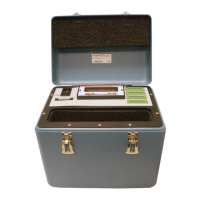
